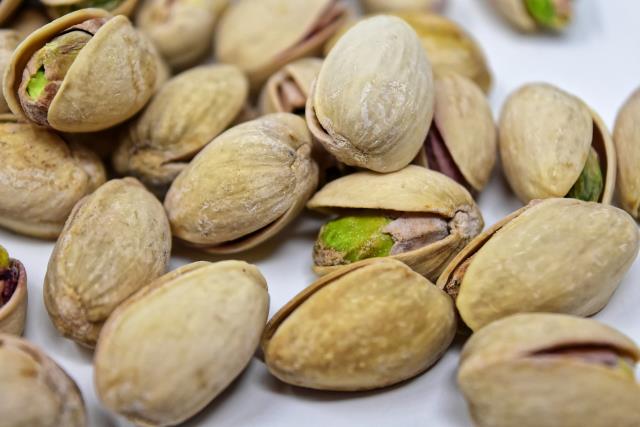By Beatrice Hawkins
It might seem that I’m a bit nutty about nuts at present! As part of a trip into western N.S.W., I passed through Elong Elong, where there is a pistachio farm. I called, but as luck would have it, it was a case of “no nuts today”!
Pistachios are a relatively – about 50 years ago!! – new nut to me and I must say not a favourite. Almonds, peanuts, brazils, walnuts and pecans, cashews in all their forms – raw, dry roasted, salted and honeyed – and even hazelnuts, are all favourites and come in well ahead of pistachios.
However I thought I needed to find out a bit more about these slightly unusual nuts as this farm is the only one I know off and I have driven past it for many years.
Commercial pistachio farming commenced in Australia in the 1980s following research by CSIRO at Merbein in Victoria and a new female variety “Sirora” particularly suited to the Murray River valley was released in 1982. This variety is almost the only one grown in Australia.
With research I found that this particular farm at Elong has been growing the nuts for 35 years and has 2000 trees, so I really did see it in its infancy, as at that time I lived near Narromine. It was also a very early commercial planting.
The climate is not all that different from areas around Warwick so maybe they are another tree that could be grown locally. Looking from the road they are not an overly large tree, nicely shaped and look as if they would be decorative in a house yard.
It seems they need 600 hours per year at temperatures over 30 degrees and six weeks below seven, so maybe they are more suited to Stanthorpe than Warwick for the chill factor.
They are classified as a “high desert” tree and thrive in suitable areas of inland Australia, with most commercial farms occurring along the Murray River in NSW, Victoria and SA, some in WA and one isolated farm near Dubbo! They are from the same family as cashews and are definitely a bit picky about the temperature.
The fruit looks similar to bunches of grapes hanging on the trees and the nuts have a split outer shell exposing the kernel. This feature gives rise to them being referred to as the “the smiling nut”.
They are tolerant of a range of soil types, are more tolerant of salt than many other fruit and nut trees, tough in drought conditions, produce for years, and are resistant to most common orchard pests and diseases.
They’ll grow to about six to 10 metres tall and spread about the same. They have a deep tap root and really thrive in deep sandy loam with deep watering but they don’t like humidity. They are tolerant of more saline water than most things.. maybe I should have tried them at Narromine as the bore on that property was quite saline.
There are only about 45 growers across Australia farming 950 hectares and these farms are expected to produce about 3000 tonnes of nuts this year. Australians eat about 3500 tonnes per year so we have a way to go to completely supply the local market. Most nuts that are eaten in Australia are imported from Iran and the United States.
Fresh nuts are easiest to sell at markets and online, are welcomed by people of Asian and Middle Eastern heritage, and processing nuts apparently is a lot of work. Maybe that and the fact that they are mostly imported, is why they are relatively expensive to buy.
The trees generally start producing nuts after about six years, reach their peak at about 12 years, so not a quick crop, but can continue bearing for 50 to 100 plus years!! A well managed orchard should have trees producing 10 kilograms of fresh nuts at 10 years of age and this will increase with maturity. Plant them early in life and the succeeding generations will be able to enjoy the “nuts” of your labour for many years!
If you would like to grow one in a house yard, it would be good to have a neighbour that liked them also as they are not self fertile and you need to have a male and female tree in relatively close proximity to get a crop of nuts. The trees, like chestnuts, are wind pollinated and one male to 10 female trees is the recommendation in an orchard situation.
If I had a large house yard or small acreage I think I could be tempted to try and grow one and learn how to use them as they are full of all the good things. They have the lowest calorie count of all nuts, the fat content is unsaturated and they are full of vitamins, minerals and fibre.
These trees are not to be confused with the lovely, small to medium sized tree, commonly called “Chinese Pistachio”, properly, “Pistacia Chinensis”, that excels as a street and park tree with spectacular autumn foliage. My son has one in his backyard in the Tamworth area and the colours are really beautiful in autumn. It provides great shade through summer to the outdoor area, but being deciduous, allows the sun through in the winter. With the aid of a leaf blower and the ride on mower, fallen leaves don’t provide a problem for long! Perfect tree for the spot!
*This is an old article that has been digitised so our readers have access to our full catalogue.







